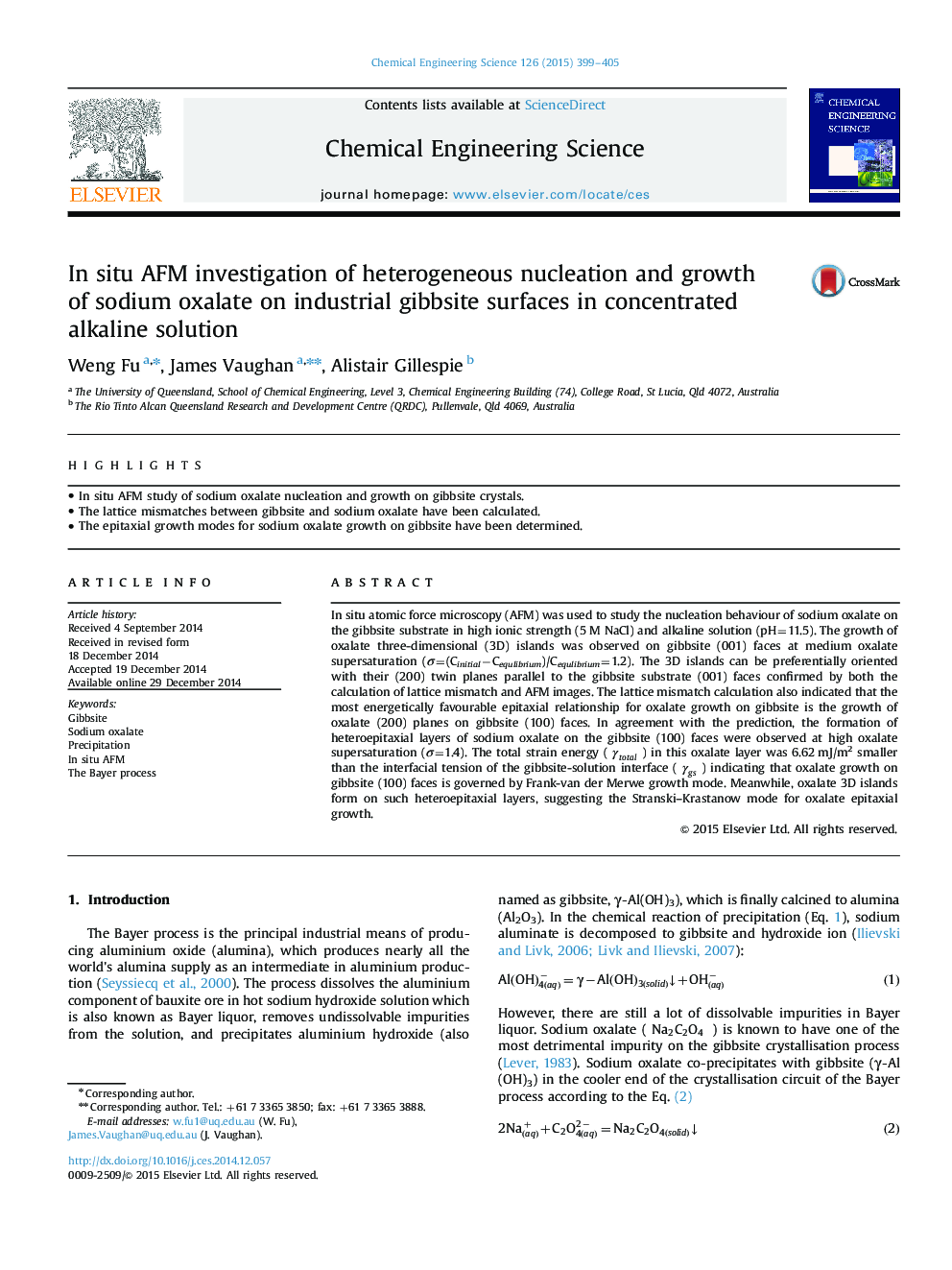| Article ID | Journal | Published Year | Pages | File Type |
|---|---|---|---|---|
| 6590294 | Chemical Engineering Science | 2015 | 7 Pages |
Abstract
In situ atomic force microscopy (AFM) was used to study the nucleation behaviour of sodium oxalate on the gibbsite substrate in high ionic strength (5 M NaCl) and alkaline solution (pH=11.5). The growth of oxalate three-dimensional (3D) islands was observed on gibbsite (001) faces at medium oxalate supersaturation (Ï=(CinitialâCequlibrium)/Cequlibrium=1.2). The 3D islands can be preferentially oriented with their (200) twin planes parallel to the gibbsite substrate (001) faces confirmed by both the calculation of lattice mismatch and AFM images. The lattice mismatch calculation also indicated that the most energetically favourable epitaxial relationship for oxalate growth on gibbsite is the growth of oxalate (200) planes on gibbsite (100) faces. In agreement with the prediction, the formation of heteroepitaxial layers of sodium oxalate on the gibbsite (100) faces were observed at high oxalate supersaturation (Ï=1.4). The total strain energy ( γtotal ) in this oxalate layer was 6.62 mJ/m2 smaller than the interfacial tension of the gibbsite-solution interface ( γgs ) indicating that oxalate growth on gibbsite (100) faces is governed by Frank-van der Merwe growth mode. Meanwhile, oxalate 3D islands form on such heteroepitaxial layers, suggesting the Stranski-Krastanow mode for oxalate epitaxial growth.
Related Topics
Physical Sciences and Engineering
Chemical Engineering
Chemical Engineering (General)
Authors
Weng Fu, James Vaughan, Alistair Gillespie,
